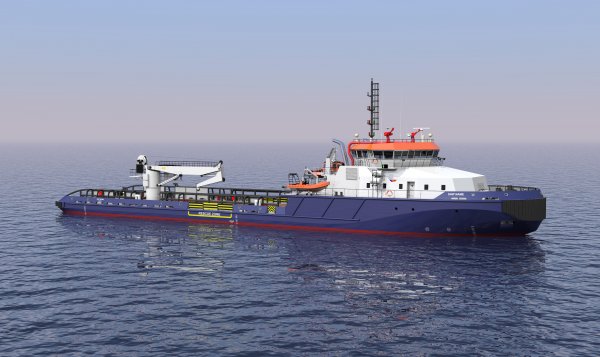Offshore Ship Designers (OSD) has unveiled a new series of Ice Class vessel designs. The new designs are especially suited for marine services around the development of new arctic ports, terminals and offshore structures. A prerequisite for this type of vessel, operating under arctic circumstances, is the ability to deal with the presence of first year or floating ice, cold conditions and less developed shore facilities. Apart from being able to perform their specific tasks, typical design requirements are increased strength, special installations for tank heating and winterization, high maneuverability and limited draft.

Development of this series of designs follows the extensive experience OSD has gained with the development of shallow draft anchor-handling tug supply vessels Arctic and Antarctic, for Ark Shipping. Arctic and Antarctic were designed in close co-operation with the owner, have a Bureau Veritas 1A Ice Class Notation, and are fully equipped to operate in the challenging and extreme conditions of the Caspian Sea, where ice formation of around 80 cm during the winter period is not exceptional.
“We have incorporated feedback from our clients into the designs. As such, the new OSD ice-class series is a response to identified market needs, covering a variety of tasks, such as supply of bulk and break cargo, towing, anchor handling, ice management, personnel transfer, environmental clean-up and safety/stand-by duties,” explained Herm Jan de Vries, technical manager at OSD.
De Vries continued, “In order to meet these diverse roles, the propulsion plant of the vessels can be adapted to suit the operational profile. Options include installation of controllable pitch or fixed pitch propellers, with or without nozzle, driven by a diesel direct, hybrid or full diesel electric power plant. Also the use of podded propellers is possible. In this way optimal performance can be achieved in various conditions such as maximum bollard pull, higher speed transfer duties, slow speed duties for ice management or stand-by duties.”
The designs are available, as standard, in three different lengths at 50m, 65m and 80m and have a bollard pull ranging from 45 up to 70 tonnes.
“Due to the limited length and cargo capacities, the smaller design is best suited for towing and pushing, ice management and anchor handling duties. The middle design brings the best of both worlds, while the larger design is typically aimed at the supply function, having a large deck area and ample tank space below deck. However it can also perform light construction and safety standby duties,” concluded Herm Jan de Vries.
Source: OSD